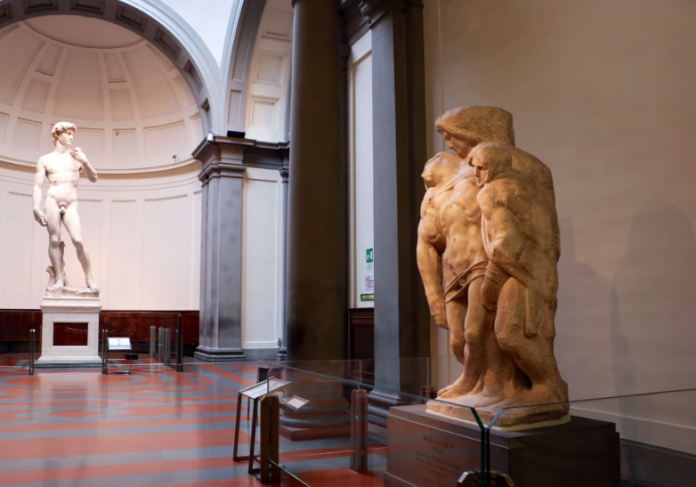The Accademia Gallery Museum in Florence, Italy, is one of the most important art museums in the world. The museum houses a vast collection of Renaissance art, with a particular emphasis on the works of Michelangelo. The museum is located in the heart of Florence, just a short walk from the famous Duomo.
The Accademia Gallery was founded in the 18th century by the Grand Duke of Tuscany, Pietro Leopoldo, as a place for artists to study and improve their craft. The museum’s collection grew over the centuries, and it now includes some of the most significant works of art from the Renaissance period.
The museum’s most famous exhibit is Michelangelo’s David, a monumental statue that stands over 17 feet tall. The statue was created between 1501 and 1504 and depicts David, the biblical hero who defeated the giant Goliath. The statue is widely regarded as one of the greatest masterpieces of the Renaissance.
In addition to the David, the Accademia Gallery also houses a significant collection of Michelangelo’s other works, including the unfinished Slaves, which were intended to be part of a larger commission for the tomb of Pope Julius II.
The museum’s collection also includes works by other Renaissance artists, such as Sandro Botticelli, Domenico Ghirlandaio, and Pontormo. The collection features many religious works, including altarpieces and devotional images, as well as secular portraits and landscapes.
The Accademia Gallery Museum is divided into several halls, each with its own unique focus. The first hall displays a collection of medieval art, including sculptures and paintings from the 13th to the 15th centuries. The second hall is dedicated to the works of Michelangelo, with many of his most famous sculptures on display.
The third hall features a collection of paintings by Florentine artists from the 15th to the 17th centuries, while the fourth hall focuses on works by foreign artists, such as Rubens and Rembrandt.
The final hall of the museum is dedicated to musical instruments, with a collection that includes many rare and unique instruments from the Renaissance period.
The Accademia Gallery Museum is an essential destination for anyone interested in Renaissance art and culture. The museum’s collection is one of the most significant in the world, and its halls provide a fascinating look at the evolution of art and music during this critical period of history.
The Accademia Gallery Museum has a rich history that spans several centuries. Originally, the museum was founded as the Academy of Fine Arts in 1563, under the patronage of Cosimo I de’ Medici. The academy was established to provide a formal education for artists in Florence, and it quickly became one of the most prestigious art schools in Europe.
Over the years, the academy collected a vast collection of art, which was displayed in various locations throughout the city. However, in the 18th century, Grand Duke Pietro Leopoldo decided to create a permanent museum to house the academy’s collection. The Accademia Gallery Museum was officially opened in 1784, and it has been one of Florence’s most popular attractions ever since.
In addition to its impressive collection of art, the Accademia Gallery Museum is also home to a library and several research centers. The museum’s library contains over 50,000 volumes, including rare books, manuscripts, and documents related to the history of art and culture in Florence.
Today, the museum is managed by the Italian Ministry of Cultural Heritage and Activities, and it continues to play an essential role in preserving and promoting Florence’s cultural heritage. The museum’s collection is constantly growing and evolving, with new exhibits and acquisitions added regularly.
Visitors to the Accademia Gallery Museum can enjoy a guided tour or explore the museum at their leisure. The museum is open daily, and visitors are advised to book their tickets in advance to avoid long lines and wait times.
In conclusion, the Accademia Gallery Museum is a must-visit destination for anyone interested in Renaissance art and culture. With its impressive collection of art, historic halls, and fascinating exhibits, the museum offers a unique glimpse into the artistic and cultural achievements of one of Europe’s most significant periods in history.



























